Seamless steel pipes, as an important industrial material, are widely used in the petroleum, chemical, power, and machinery manufacturing industries due to their unique manufacturing process and excellent performance. Their seamless nature ensures exceptional reliability in extreme environments such as high pressure, high temperature, and high corrosion, making them an indispensable foundational material in modern industry.
First, Definition and Characteristics of Seamless Steel Pipes
As the name suggests, seamless steel pipes are steel pipes without welds. Their bodies are formed from a single piece of metal billet through processes such as piercing, rolling, or drawing. Key characteristics of seamless steel pipes include:
High Strength: Due to their integral forming process, seamless steel pipes possess superior mechanical properties compared to welded steel pipes and can withstand higher pressures and loads.
Second, Production Process of Seamless Steel Pipes
The production processes for seamless steel pipes are primarily divided into two categories: hot rolling and cold rolling (cold drawing), each suitable for pipes of different specifications and applications.
1. Hot-Rolled Seamless Steel Pipes
The production process for hot-rolled seamless steel pipes primarily involves the following steps:
- Billet Preparation: High-quality round steel billets are selected and heated to the appropriate temperature in a heating furnace. - Piercing: A piercing machine is used to punch the heated billet into a hollow shell.
- Rolling: The shell is rolled into a steel pipe of the desired size using a tube mill.
- Sizing and Straightening: The rolled steel pipe is sized and straightened to ensure dimensional accuracy and straightness.
- Heat Treatment: Heat treatments such as normalizing and annealing are performed according to material requirements to improve the mechanical properties of the steel pipe.
- Inspection and Packaging: Finished products undergo non-destructive testing and dimensional inspection, and are packaged and shipped after passing the inspection.
Hot-rolled seamless steel pipe is typically used for the production of large-diameter, thick-walled steel pipes. Its advantages are high production efficiency and low cost, but its surface quality and dimensional accuracy are relatively poor.
2. Cold-rolled (Cold-drawn) Seamless Steel Pipe
The production process of cold-rolled seamless steel pipe is more complex and mainly includes the following steps:
- Billet Preparation: Hot-rolled shells are selected as billets and then pickled to remove surface oxide scale. - Cold Rolling or Cold Drawing: The rough steel pipe is processed to the desired dimensions using a cold rolling or cold drawing mill. This process significantly improves the dimensional accuracy and surface quality of the steel pipe.
- Heat Treatment: Cold-processed steel pipes typically undergo annealing to eliminate internal stresses and restore the material's plasticity.
- Finishing: The steel pipe undergoes finishing treatments such as straightening, cutting, and polishing.
- Inspection and Packaging: Similar to hot-rolled steel pipes, cold-rolled steel pipes undergo rigorous inspection before shipment.
Cold-rolled seamless steel pipes are characterized by high dimensional accuracy and a smooth surface finish, making them suitable for applications requiring high precision and surface finish, such as precision machinery and hydraulic systems.
Third, Classification of Seamless Steel Pipes
Classification by Application
- Seamless Steel Pipes for Structural Use: Primarily used for structural components in construction, machinery manufacturing, and other fields.
- Seamless Steel Pipes for Fluid Transportation: Used for transporting fluids such as water, oil, and gas, such as those specified in GB/T 8163 standard steel pipes. - Seamless steel pipes for high-pressure boilers: such as GB 5310 standard steel pipes, used in the manufacture of high-pressure boiler components such as superheaters and headers.
- Seamless steel pipes for petroleum cracking: such as GB 9948 standard steel pipes, used in the high-temperature and high-pressure environments of petroleum refining equipment.
Fourth, Application Areas of Seamless Steel Pipes
Seamless steel pipes are widely used in the following fields due to their excellent performance:
1. Oil and gas industry: Used in oil well casings, oil pipelines, and refining equipment, requiring high strength, high-pressure resistance, and corrosion resistance.
2. Chemical industry: Used for conveying corrosive media such as acids and alkalis, stainless steel or alloy steel seamless pipes are typically used.
3. Power industry: Used in high-pressure boiler components such as superheaters and headers, requiring high-temperature and high-pressure resistance.
4. Machinery manufacturing: Used in precision components such as hydraulic cylinders and bearing sleeves, requiring high dimensional accuracy and a smooth surface.
5. Automotive industry: Used in the manufacture of drive shafts, exhaust systems, and other components. 6. Construction Industry: Used in steel structure support, bridge construction, and other applications.
Fifth: Market Status and Development Trends of Seamless Steel Pipes
In recent years, with the acceleration of global industrialization, demand for seamless steel pipes has continued to grow. As the world's largest producer and consumer of seamless steel pipes, China ranks among the top in both production and export volumes. Major domestic seamless steel pipe manufacturers include Tianjin Steel Pipe, Baosteel, and Ansteel, whose products not only meet domestic demand but also are exported to overseas markets.
However, the seamless steel pipe industry also faces several challenges:
1. Raw material price fluctuations: Fluctuations in steel prices directly affect the production cost of seamless steel pipes.
2. Environmental pressures: The steel industry is energy-intensive and highly polluting, and tightening environmental protection policies have placed higher demands on manufacturers.
3. International trade frictions: Some countries have implemented anti-dumping and countervailing measures against my country's seamless steel pipe products, impacting export markets.
Future trends in the seamless steel pipe industry include:
- High-end development: With technological advancements, high-value-added, high-performance seamless steel pipe products will become the mainstream market.
- Green Manufacturing: Achieve sustainable development through energy conservation, consumption reduction, recycling, and other measures.
- Intelligent Production: Introduce automated and intelligent technologies to improve production efficiency and product quality.
Sixth Conclusion
As a key foundational material in modern industry, the performance and quality of seamless steel pipes are directly related to the safety and development of related industries. With technological advancements and the diversification of market demands, the production processes and application areas of seamless steel pipes will continue to expand. In the future, the industry should focus on technological innovation and green development to meet the growing demand of the high-end market.
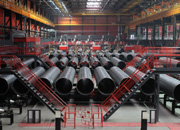 Threeway Steel is known as a professional supplier engaged in manufacturing and distributing a wide range of steel pipe, and our headquarter located the central part of China – Hunan and six associated factories throughout China.
Threeway Steel is known as a professional supplier engaged in manufacturing and distributing a wide range of steel pipe, and our headquarter located the central part of China – Hunan and six associated factories throughout China.
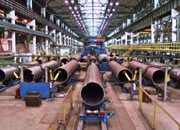 Threeway Steel is known as a professional supplier engaged in designing, manufacturing and distribution of a wide range of steel products with the headquarter located the central part of China – Hunan and six associated factories throughout China.
Threeway Steel is known as a professional supplier engaged in designing, manufacturing and distribution of a wide range of steel products with the headquarter located the central part of China – Hunan and six associated factories throughout China.
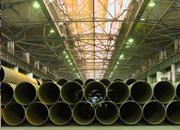 Threeway Steel is known as a professional supplier engaged in designing, manufacturing and distribution of a wide range of steel products with the headquarter located the central part of China – Hunan and six associated factories throughout China.
Threeway Steel is known as a professional supplier engaged in designing, manufacturing and distribution of a wide range of steel products with the headquarter located the central part of China – Hunan and six associated factories throughout China.
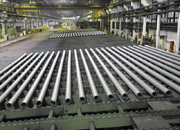 Threeway Steel is known as a professional supplier engaged in designing, manufacturing and distribution of a wide range of steel products with the headquarter located the central part of China – Hunan and six associated factories throughout China.
Threeway Steel is known as a professional supplier engaged in designing, manufacturing and distribution of a wide range of steel products with the headquarter located the central part of China – Hunan and six associated factories throughout China.
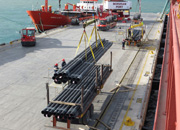 Threeway Steel is known as a professional supplier engaged in designing, manufacturing and distribution of a wide range of steel products with the headquarter located the central part of China – Hunan and six associated factories throughout China.
Threeway Steel is known as a professional supplier engaged in designing, manufacturing and distribution of a wide range of steel products with the headquarter located the central part of China – Hunan and six associated factories throughout China.

